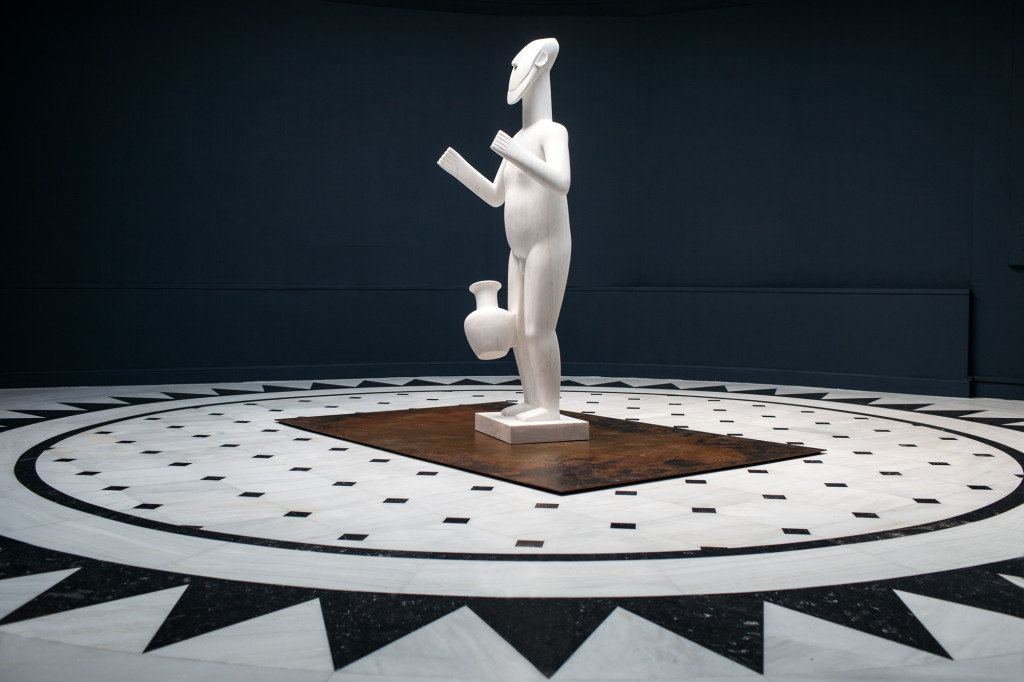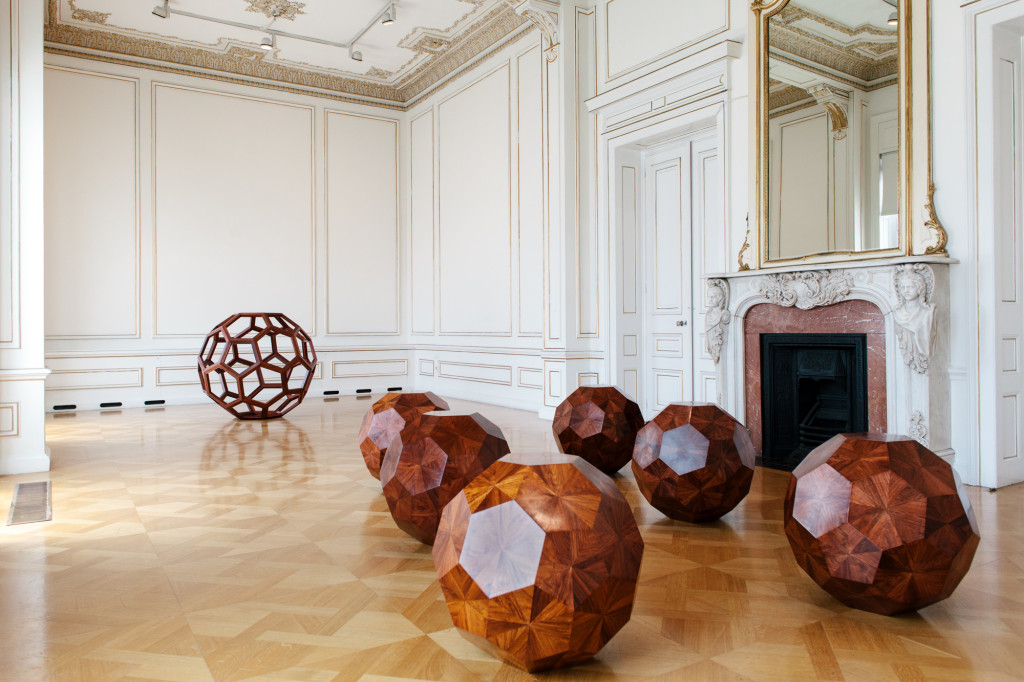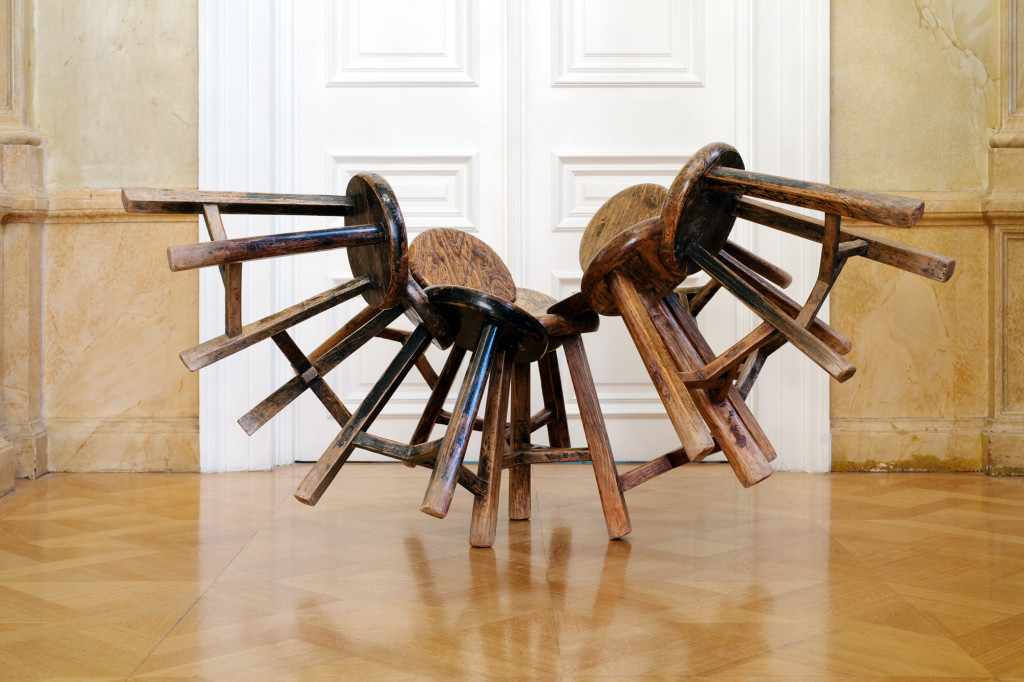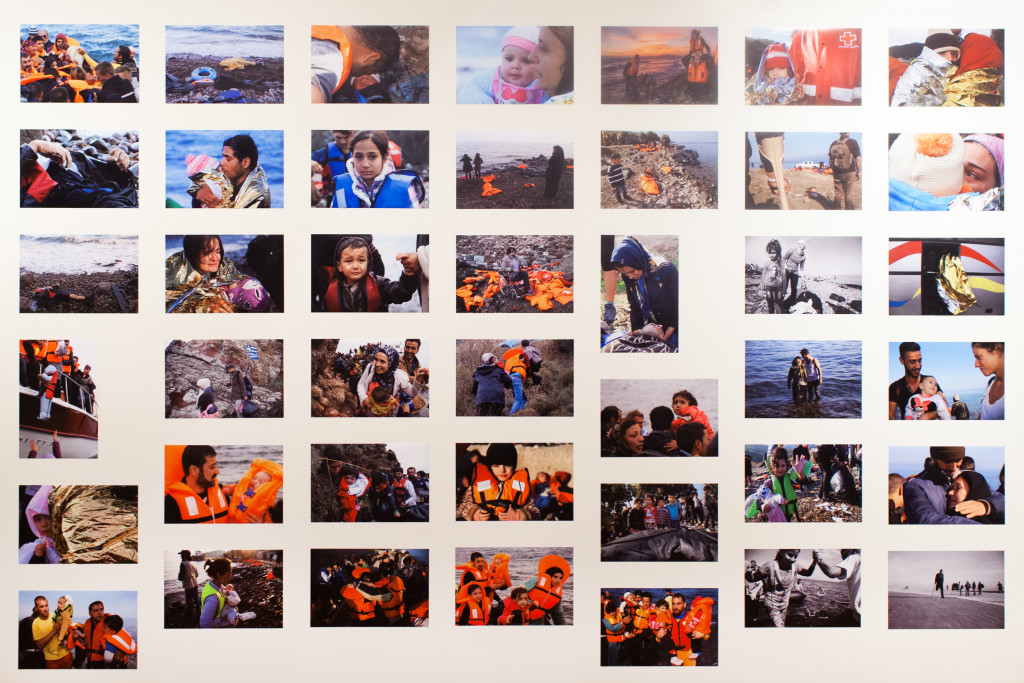Ai Weiwei: Museum of Cycladic Art, Athens
by Kostas Prapoglou
Since the start of the refugee crisis in Europe, and especially for the situation involving the Aegean islands, Ai Weiwei at Cycladic, presented at the Museum of Cycladic Art in Athens, partly generates a new body of work in response to these events.
Spanning the two floors of the museum’s older buildings, as well as other areas of its new annex, the exhibition embraces new works by Ai Weiwei, inspired by the museum’s collection of ancient artifacts and the artist’s visit to the Greek island of Lesvos. The rest have been appropriated in an attempt to fit the local socio-political context.

On the second floor is the Standing Figure (2016), a life-size marble statue created specifically for this show; it clearly references the world famous Cycladic figurines that are part of the museum’s permanent collection of prehistoric art. By re-scaling the original smaller size of the figurines and orchestrating a new pose—embracing open arms instead of their original pose of crossed arms at the chest—Weiwei conveys notions of responsiveness, openness, strength and power. At the same time, by attaching a vessel to his figurine’s knee, he references an older work of his, the photographic series of Dropping a Han Dynasty Urn (1995), where Ai is photographed letting from his hands a Han dynasty (206 BC – 220 AD) urn to fall on the floor and break into pieces, a clear reference to the mass destruction of Chinese antiquities during Chairman Mao’s Cultural Revolution between 1966–1976. With this representation, the artist surveys the parallel cultural ancient pasts of Greece and China, simultaneously drawing our attention to the different treatment that antiquities have received in two divergent geographical locations.

Marble is one of the artist’s favored mediums, alongside wood, metal, and crystals. Past works, such as Mask (2011), Cao (2014), and Surveillance Camera with Plinth (2015), each infused with autobiographical elements, transmit ideas of isolation, displacement, governmental control, and environmental disuse. In a new marble work, Tyre (2016), the artist reflects on his experience on the island of Lesvos, where he witnessed thousands of refugees crossing the sea from Turkey to reach Greek soil. Innumerable lifebuoys abandoned on the island shores were perceived as detritus of human struggle for survival. By adopting this symbol of life, Ai turns it into a monument of durability and a piece of indelible memory for both physical eye witnesses and everybody else around the globe who became an observer of this historical period of time through the coverage of mass media.

During his stay on the island of Lesvos in late December 2015, Weiwei met a number of photographers who he decided to invite in a separate section of the museum to exhibit a series of photographs taken on the island. The works of Michalis Bakas, Dimitris Fotiou, Thomas Mamakos, Elias Markou, Petros Tsakmakis and Stratis Tsoulellis totalling around 600 photographs unveil the severe conditions of those refugees arriving on the island. The documentation of some hard and shocking scenes unfolds the role and involvement of local populations and volunteers from all over the world and their brave response to the hardship of fellow humans.

A large portion of the exhibition features works already seen in past solo exhibitions worldwide, for example works such as Grapes (2011), Divina Proportione (2012), and Study of Perspective (2014)—while this could potentially be perceived by trained audiences as a disappointment, the artist’s engagement with the topical refugee issue, in particular his engagement with the group of local photographers, transforms Ai Weiwei at Cycladic into a riveting exhibition. Despite the visitor complaints about the steep seven-euro admission fee in a period of economic dystopia, the last part of the show is priceless.
Ai Weiwei at Cycladic at The Museum of Cycladic Art Athens runs through October 30, 2016.